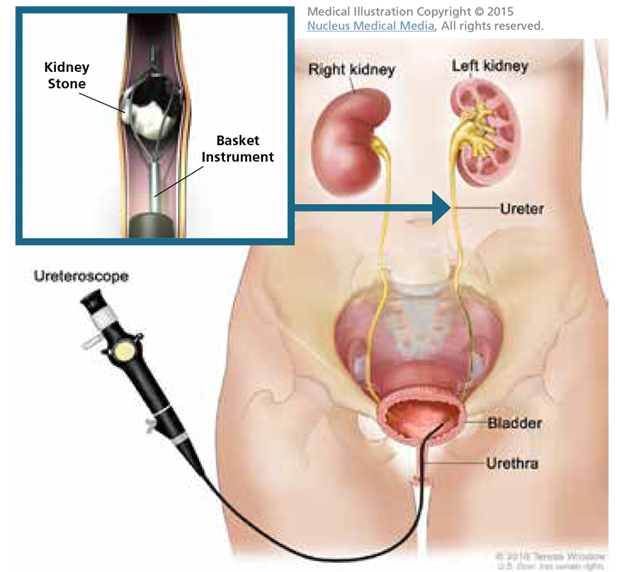
Ureteroscopy (URS)* is used to treat stones in the kidney and ureter . URS involves passing a very small telescope, called an ureteroscope*, into the bladder, up the ureter and into the kidney . Rigid telescopes are used for stones in the lower part of the ureter near the bladder . Flexible telescopes are used to treat stones in the upper ureter and kidney . The ureteroscope lets the urologist see the stone without making an incision (cut) . General anesthesia keeps you comfortable during the URS procedure . Once the urologist* sees the stone with the ureteroscope, a small, basket-like device grabs smaller stones and removes them . If a stone is too large to remove in one piece, it can be broken into smaller pieces with a laser or other stone-breaking tools . Once the stone has been removed whole or in pieces, the health care provider may place a temporarystent* in the ureter . A stent is a tiny, rigid plastic tube that helps hold the ureter open so that urine can drain from the kidney into the bladder . Unlike a catheter* or a PCNL drain tube, this tube is completely within the body . It does not require an external bag to collect urine . You may go home the same day as the URS and can begin normal activities in two to three days . If your urologist places a stent, he or she will remove it four to 10 days later . Sometimes a string is left on the end of the stent so you can remove it on your own . It is very important that the stent is removed when your health care provider tells you . Leaving the stent in for long periods can cause an infection* and loss of kidney function .
For Any Emergency Contact
Best Kidney Transplant Center.
Make an Online Appointment
Best Kidney Transplant Center.
